
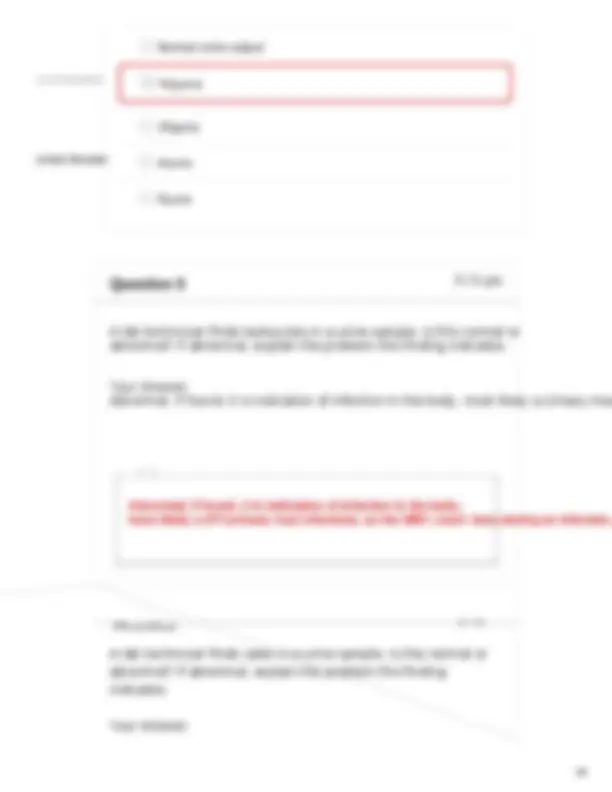
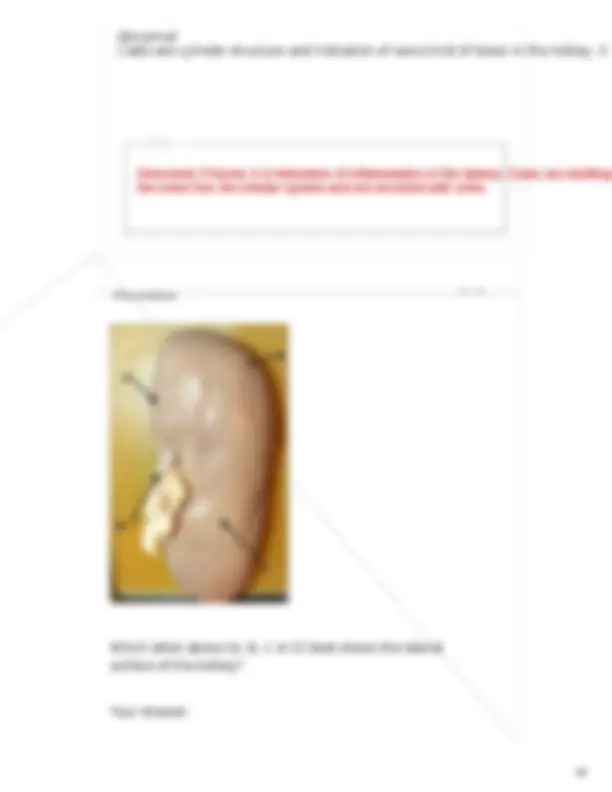
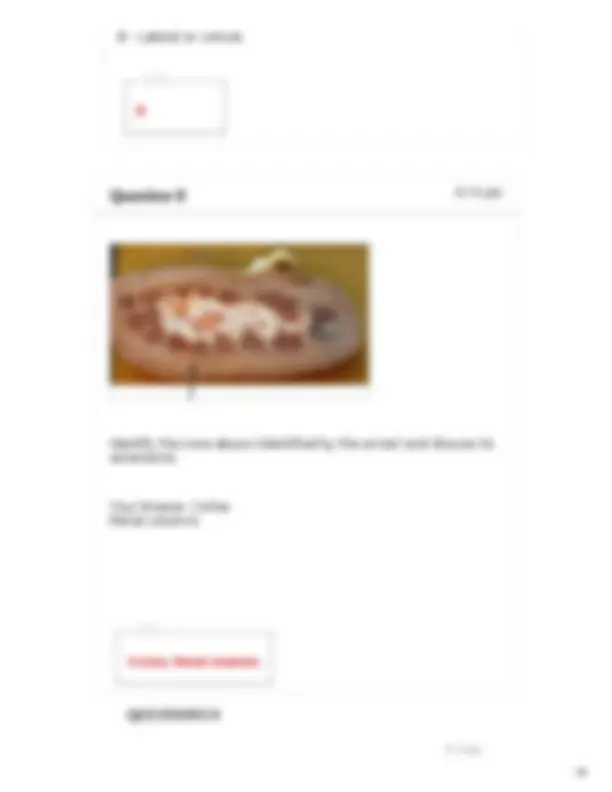
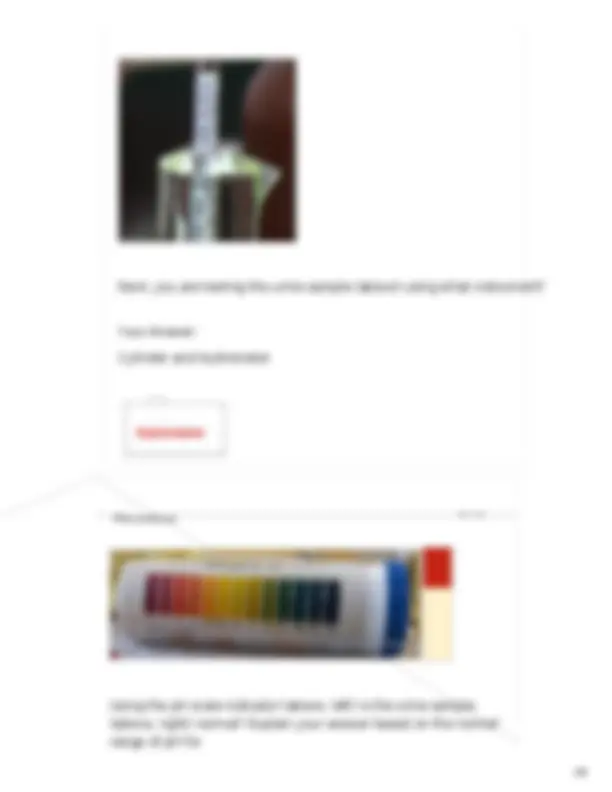
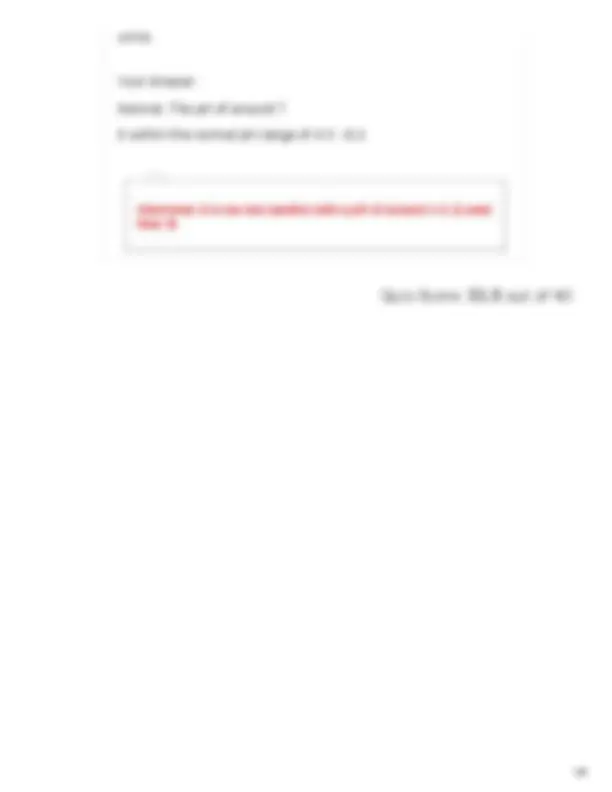


Study with the several resources on Docsity

Earn points by helping other students or get them with a premium plan


Prepare for your exams
Study with the several resources on Docsity

Earn points to download
Earn points by helping other students or get them with a premium plan
Community
Ask the community for help and clear up your study doubts
Discover the best universities in your country according to Docsity users
Free resources
Download our free guides on studying techniques, anxiety management strategies, and thesis advice from Docsity tutors
A lab exam for the course Essential Human Anatomy & Physiology II with Lab-2023-Burtt. The exam consists of 12 questions and requires the use of Respondus LockDown Browser. The questions cover topics related to the urogenital system, including urinary and metabolic, reproductive and digestive, digestive and urinary, and reproductive and urinary systems. The exam includes questions about the odor and solutes in urine, as well as visual examination of urine samples.
Typology: Exams
1 / 9

This page cannot be seen from the preview
Don't miss anything!






Correct! None of the above Urinary and Metabolic Reproductive and Digestive Digestive and Urinary Reproductive and Urinary The two body systems described together as the urogenital system are:
Attempt Time Score LATEST Attempt 1 46 minutes 31.5 out of 40
of 40 Submitted Apr 20 at 10:34pm This attempt took 46 minutes.
Question 0 /^ 2. A fresh, normal urine sample should have what odor? Correct! (^) Distinctive but not pungent Strong sulfur Sweet from acetone Rotten Pungent Correct! (^) Urea Creatinine Sodium Chloride Potassium Chloride Uric acid The most abundant solute in urine is: Question 3 2.5^ /^ 2.5^ pts A person produces 40 milliliters of urine a day. This is called:
Question 3 /^3 Abnormal Casts are cylinder structure and indication of some kind of lesion in the kidney. it i Abnormal; If found, it is indication of inflammation of the kidney. Casts are molding the tubes into the tubular system and are excreted with urine. Which letter above (A, B, C or D) best shows the lateral surface of the kidney? Your Answer:
B - Lateral or convex B Cortex; Renal columns Your Answer: Cortex Renal columns Identify the zone above (identified by the arrow) and discuss its extensions. Question 8 4 /^4 pts QUESTIONS 9 0 / 3 pts
Question 3 /^3 You are doing a visual examination of a sample of urine (above) in the lab. Is this a normal sample of urine? Explain. Your Answer: Normal. It's pale yellow in color. clear Normal: Color-pale yellow Clarity- clear
Question 0 /^3 Next, you are testing the urine sample (above) using what instrument? Your Answer: Cylinder and Hydrometer Hydrometer Using the pH scale indicator (above, left) is the urine sample (above, right) normal? Explain your answer based on the normal range of pH for